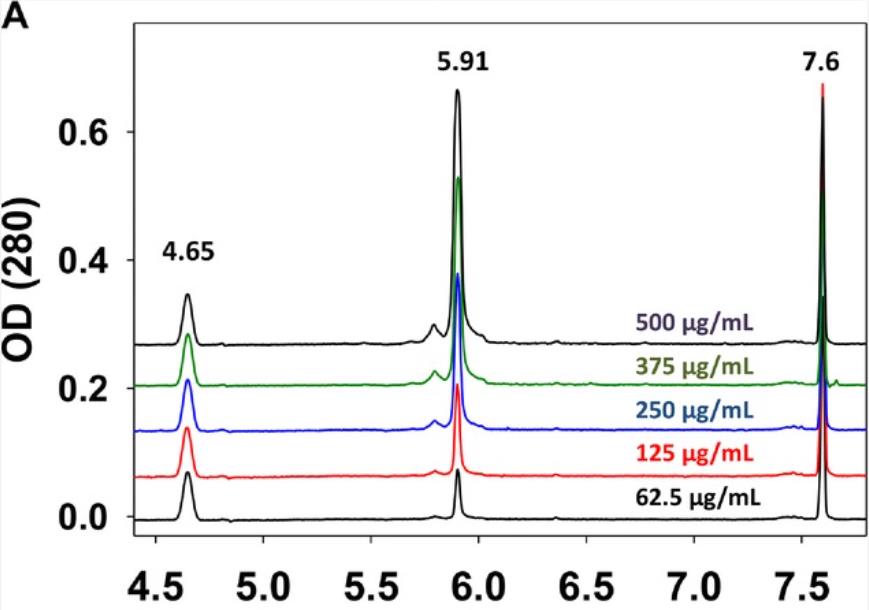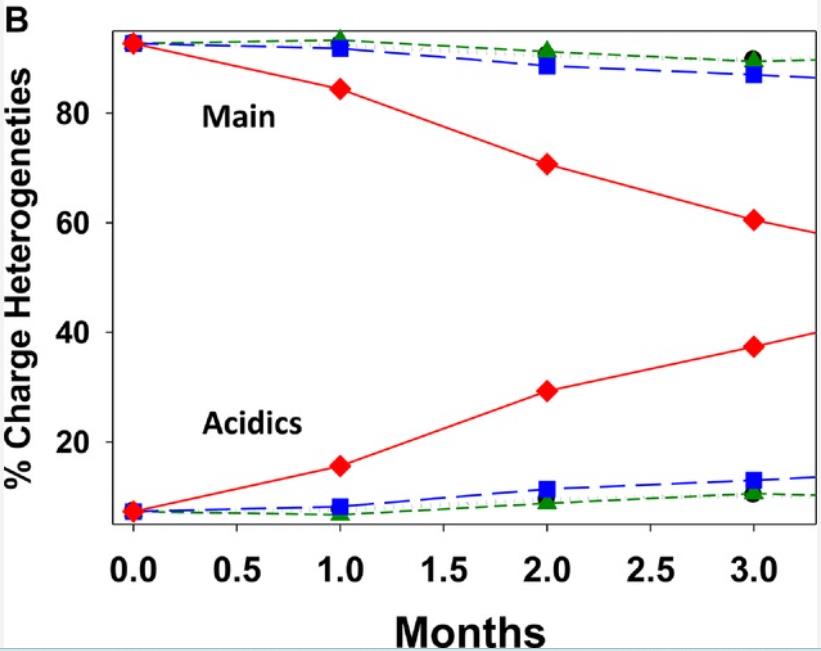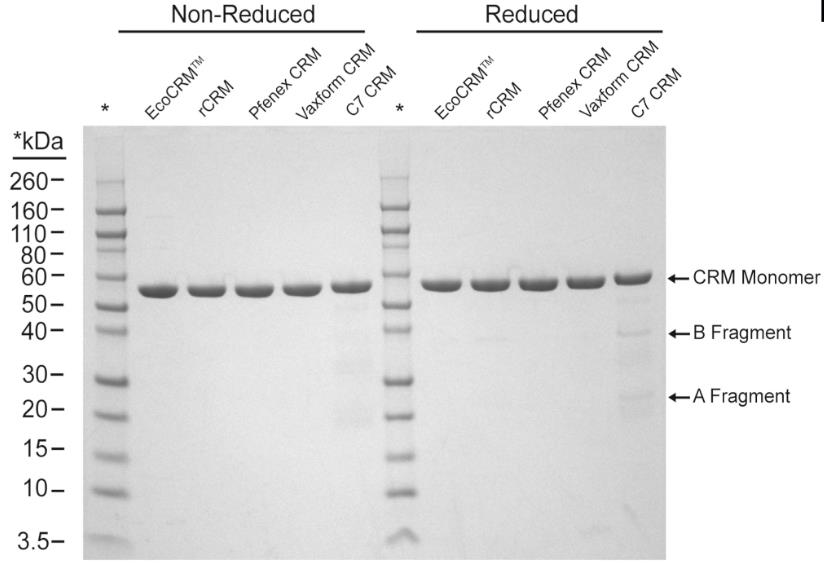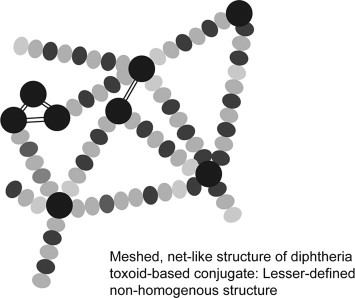Native Diphtheria Toxin CRM197, Mutant [Glu52]
| Cat.No. : | CRM197-190 |
| Product Overview : | CRM197 was expressed in Corynebacterium diphtheriae, and purified by state-of-art protein purification method such as centrifugation, amonium sulfate precipitation and chromatography, then lyophilized after addition of sucrose. Moisture: <3% by Karl-Fisher |
| Availability | April 18, 2025 |
| Unit | |
| Price | |
| Qty |
- Specification
- Gene Information
- Related Products
- Case Study
- Application
- Download
| Species : | Corynebacterium diphtheriae |
| Source : | Corynebacterium diphtheriae |
| Tag : | Non |
| Description : | The Glu52 diptheria toxin, also known as CRM197 (Cross-reactive materials 197), is a nontoxic mutant of diphtheria toxin, has a mutation in fragment A (a glycine to glutamic acid substitution at position 52) that results in the complete loss of enzymatic activity. |
| Form : | Lyophilized powder (liquid also could be provided) |
| Molecular Mass : | ~58 kDa |
| Sterility : | Inoculation/membrane filtration |
| Endotoxin : | <10 EU/μg of protein by LAL method. |
| Purity : | > 90% by SDS-PAGE and HPLC |
| Storage : | Store at -20 centigrade. |
| Concentration : | 1~20mg/ml(aq) by BCA or Lowry |
| Reconstitution : | Before lyophilization, CRM197(aq) was about 5mg/ml in sterile water with 5% sucrose. Vials containing appoximately 5mL of CRM197(aq) were lyophilized. The lyophilized powder can be reconstituted with water or sodium phosphate buffer. We could provide liquid or lyophilized powder. |
Case 1: Rustandi RR, et al. Electrophoresis. 2014
This paper discusses the use of imaged capillary isoelectric focusing (icIEF) technology for various applications in the development of CRM197. The icIEF method is used to quickly establish a test for verifying CRM197's identity, to measure its concentration during production, and to assess its stability under different temperatures. The data shows that icIEF is a versatile tool that can help select the best product candidates in the early stages and support the characterization of CRM197 throughout its development.

Fig1. Electropherograms of CRM197 standards in the concentration range of 62.5–500 μg/mL.

Fig2. CRM197 stability curves at four different temperatures for 3 months.
Case 2: Hickey JM, et al. J Pharm Sci. 2018
The study compared CRM197 proteins from different expression systems and manufacturers, including heterogenic expression systems such as E. coli and Pseudomonas fluorescens, as well as traditional diphtheria systems. The results showed that these heterogeneously expressed CRM197 proteins were highly similar to, and in some cases superior to, traditional CRM197 proteins in terms of primary sequence, post-translational modification, advanced structural integrity, solubility, physical stability, and in vitro antigenicity.

Fig1. SDS-PAGE analysis of CRM197 molecules under nonreducing and reducing conditions.

Fig2. ELISA reactivity of each CRM197 protein as a function of protein concentration (0.005-100 μg/mL) to a polyclonal CRM197 antibody.
CRM197 is a non-toxic mutant of diphtheria toxin and has wide application prospects, especially in the field of vaccine development. It loses its original toxicity by substitution of a single amino acid (Gly mutation of glycine 52nd to glutamate Glu), but retains the immunogenicity of diphtheria toxin. This property makes CRM197 an ideal carrier for polysaccharide vaccines, which can improve the immunogenicity of polysaccharide antigens and is widely used in a variety of conjugate vaccines, such as Hib vaccines, pneumococcal vaccines and meningococcal vaccines.
In the field of biopharmaceuticals, CRM197 is not only used in vaccine development, but also has received attention for its anti-tumor activity. Studies have shown that CRM197 can inhibit the growth and reproduction of tumor cells by binding to epidermal growth factor HB-EGF and blocking its activation of ErbB receptor. In addition, CRM197 is used in cancer immunotherapy, as a cancer vaccine carrier, and plays a role in the treatment and prevention of a variety of cancers.
In addition, CRM197 is also used in the development of viral vaccines, such as the development of influenza A virus vaccines and hepatitis E vaccines. It has also shown potential in the prevention and treatment of fungal diseases, vaccines for smoking cessation, and the treatment of allergic diseases.
In terms of production process, CRM197 can be produced by E. coli expression system to achieve non-label, efficient and soluble expression, providing a stable source of raw materials for the development of vaccines and other biopharmaceutical products. With the deepening of the research on CRM197, its application potential in disease prevention and treatment will be further explored.

Fig1. Structure of a diphtheria toxoid-based conjugate. (Michael Bröker, 2011)
Not For Human Consumption!
Inquiry
- Reviews
- Q&As
Ask a Question for All CRM197 Products
Required fields are marked with *
My Review for All CRM197 Products
Required fields are marked with *
Inquiry Basket


